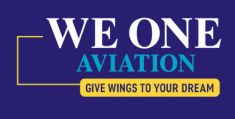Overview Of
Student Pilot License
To start their aviation education novice pilots must obtain an initial license known as the Student Pilot License (SPL). Under this permit trainees can receive flight training from certified instructors. A basic Student Pilot License stands as the essential requirement for continuous flight education which leads to obtaining Private Pilot License (PPL) and finally progressing to Commercial Pilot License (CPL).
SPL Course Details
The Student Pilot License course builds necessary aviation learning while allowing students to gain practical flight experience. The course typically includes:
✅ Ground Training: Basic aviation concepts, air regulations, and principles of flight.
✅ Flight Training: Introduction to aircraft handling, takeoffs, landings, and basic maneuvers.
✅ Radio Telephony (RT): Basic communication with Air Traffic Control (ATC) during flight operations.
Eligibility Criteria for SPL
A Student Pilot License (SPL) application requires candidates to satisfy several conditions.
✅ Minimum age of 16 years.
✅ Completion of 10th grade or equivalent.
✅ The candidate must pass a medical fitness examination which approves mental and physical health through a doctor certified by the DGCA
SPL Admission Process
The SPL admission process involves the following steps:
✅ Step 1: Enrollment in a DGCA-Approved Flying School
Candidates must choose a DGCA-approved flying school where they will undergo ground and flight training.
✅ Step 2: Application and Documentation
The application needs submission with essential documents such as age verification evidence and educational records alongside medical health reports.
✅ Step 3: Written Examination
A written test is conducted to assess knowledge in subjects such as aviation regulations, air navigation, and aircraft principles.
✅ Step 4: Medical Examination
Qualified candidates need to pass Class II medical tests with doctors who are authorized by the DGCA for determining flying fitness.
✅ Step 5: Issuance of SPL
Upon successfully passing the examination and medical assessment, candidates receive their Student Pilot License, enabling them to commence flight training.
Scope of Student Pilot License (SPL)
A Student Pilot License (SPL) allows aspiring pilots to begin their aviation journey with supervised flight training. While an SPL does not permit solo or commercial flying, it lays the foundation for pursuing higher licenses like the Private Pilot License (PPL) and Commercial Pilot License (CPL).
✅ Basic Flight Training: Gain initial hands-on flying experience under instructor supervision.
✅ Path to Advanced Licenses: An SPL makes you eligible to progress toward a PPL and later a CPL.
✅ Strong Aviation Foundation: Learn essential flying techniques, safety protocols, and communication with Air Traffic Control (ATC).
An SPL sets the stage for a rewarding aviation career, opening doors to specialized ratings and professional opportunities.
Next Steps After SPL
Students who obtain their Student Pilot License must progress to a Private Pilot License by fulfilling flight hour requirements and exam passing. A PPL offers independent flight capabilities and functions as a gateway toward obtaining the Commercial Pilot License by students who want to start careers in professional aviation. Throughout their transformation from SPL to CPL recruitment candidates receive aviation training that enables them to succeed professionally within the aviation field.


